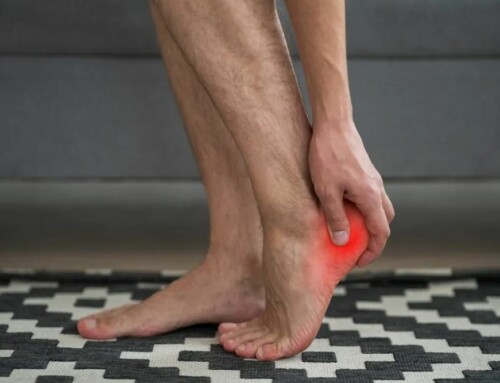Guest Blog this week by one of our resident students Jared Gersch, SPT.
What is Frozen Shoulder?
By Jared Gersch, SPT
Frozen shoulder, also known as adhesive capsulitis is a condition where the shoulder capsule thickens and becomes tight. Stiff bands of tissue (adhesions) and scar tissue may develop, leading to pain and limited range of movement in your shoulder.
What Causes Frozen Shoulder?
The causes of frozen shoulder are not fully understood, but there are several risk factors that may put you more at risk for developing this condition:
- Immobilization (After surgery or an injury)
- Chronic health conditions such as diabetes or a stroke
- Individuals between the ages of 40 to 70 years old
- More common in women than men
What are Symptoms of Frozen Shoulder?
Typically, individuals with frozen shoulder will experience pain with movement, either in the outer shoulder area or sometimes in the upper arm. The pain may be dull or aching, and generally is provoked with movement of the shoulder in any direction.
Physical Therapy for Frozen Shoulder
Physical therapy can help reduce the pain, restore range of motion and increase the strength of the affected shoulder, allowing individuals to return to normal function. Physical therapy treatment for frozen shoulder can include, but is not limited to: Stretching and range of motion exercises, joint mobilizations to improve joint capsule movement, and strengthening exercises to enhance efficiency of movement in the affected shoulder. Examples of range of motion exercises include:
Can Frozen Shoulder be Prevented?
Gentle, progressive range of motion exercises, stretching, and using your shoulder frequently may help prevent frozen shoulder after surgery or an injury.
*Other Facts of Frozen Shoulder
- May persist up to 2-3 years if gone untreated
- It affects one shoulder, but may move to the other shoulder later on
- Stages of frozen shoulder:
–Freezing: In the “freezing” stage, you slowly have more and more pain. As the pain worsens, your shoulder loses range of motion. Freezing typically lasts from 6 weeks to 9 months.
–Frozen: Painful symptoms may actually improve during this stage, but the stiffness remains. During the 4 to 6 months of the “frozen” stage, daily activities may be very difficult.
-Thawing: Shoulder motion slowly improves during the “thawing” stage. Complete return to normal or close to normal strength and motion typically takes from 6 months to 2 years.
For more information and treatment options for frozen shoulder, call 518-289-5242 or contact the therapists at Capital Area Physical Therapy. Treatment is available at their Malta physical therapy clinic and Queensbury physical therapy locations.
CapitalAreaPT.com
Malta, NY
Queensbury, NY







